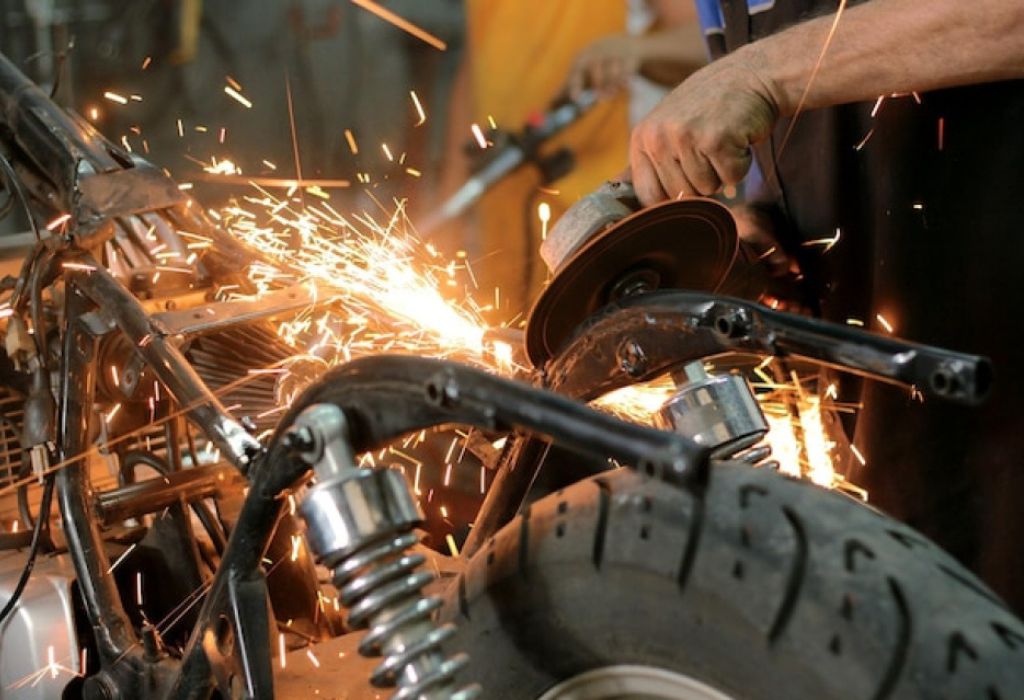Every welder knows the frustration of a machine shutting down mid-job. This usually happens because of a factor many beginners overlook: the duty cycle.
The duty cycle determines how long a welder can operate continuously before it overheats. Without managing it, welders risk damaging their machine and ruining their projects.
According to industry data, welders with a higher duty cycle last longer and are safer for demanding jobs.
This makes understanding duty cycle crucial for both professionals and hobbyists.
Whether welding in a garage or on a construction site, knowing the duty cycle helps plan jobs more effectively. It saves time, prevents breakdowns, and keeps productivity high.
This guide breaks down the meaning of duty cycle, why it matters, and how to manage it. By the end, you’ll know exactly how to select and use a welder based on duty cycle ratings.
Understanding the Duty Cycle in Welding

The duty cycle on a welder refers to the percentage of time the machine can run continuously within a 10-minute period. Once the limit is reached, the machine must cool down.
For example, a welder with a 60% duty cycle at 200 amps can operate for 6 minutes straight. After that, it needs 4 minutes of rest to avoid overheating.
Manufacturers measure duty cycle under standard lab conditions, often at 40°C. In real work environments, the numbers may vary depending on temperature and usage.
A higher duty cycle rating means the welder can handle longer runs at a given amperage. This is important for heavy fabrication, pipelines, and industrial work.
Without understanding duty cycle, welders may overuse their machines, leading to costly repairs. It is one of the most important specs to consider before buying a welder.
Why is duty cycle important?
It prevents overheating and ensures machine longevity.
How is duty cycle measured?
It is measured in 10-minute cycles as a percentage.
Does a higher duty cycle mean more power?
No, it means longer safe run time, not necessarily higher output.
Can all welders have the same duty cycle?
No, entry-level welders usually have lower duty cycles than industrial models.
Does temperature affect duty cycle?
Yes, hotter conditions reduce cooling efficiency and lower usable duty cycle.
Factors That Influence Duty Cycle
Several factors influence a welder’s duty cycle, starting with amperage. Higher amperage generates more heat, reducing the available duty cycle.
Cooling systems also play a major role. Welders with built-in fans or liquid cooling maintain better efficiency under load.
Environmental conditions impact performance as well. Welding in hot climates causes machines to hit their limit faster than in cooler areas.
Machine design and build quality further affect the rating. Industrial welders use heavier components designed for continuous use.
Even maintenance habits matter. Dust, dirt, and clogged vents reduce cooling efficiency, lowering the effective duty cycle.
Does higher amperage lower duty cycle?
Yes, the more amps you use, the shorter the continuous runtime.
Do better cooling systems improve duty cycle?
Yes, advanced cooling extends safe operating time.
Can outside temperature change duty cycle?
Yes, hot environments reduce efficiency significantly.
Do industrial welders have longer duty cycles?
Yes, they are built for heavier and continuous work.
Does maintenance affect duty cycle?
Yes, clean and well-maintained machines run longer without overheating.
Why Duty Cycle Matters for Welders
The duty cycle directly affects productivity. Longer duty cycles allow welders to work continuously without interruption.
In professional settings, downtime can cost both time and money. A welder that overheats mid-shift disrupts the entire workflow.
A higher duty cycle also improves weld quality. Consistency is easier to maintain when the machine doesn’t pause frequently.
For safety, respecting the duty cycle is essential. Overheating can damage internal circuits and create fire risks.
When buying a welder, matching duty cycle to the type of projects is one of the smartest decisions. It prevents frustration and ensures reliable performance.
Does duty cycle affect productivity?
Yes, higher duty cycles mean fewer interruptions.
Can overheating damage a welder permanently?
Yes, it can burn out circuits and shorten lifespan.
Is duty cycle linked to weld quality?
Yes, steady operation improves weld consistency.
Do beginners need to care about duty cycle?
Yes, even hobby welders should understand limits.
Can ignoring duty cycle be dangerous?
Yes, it can cause equipment failure and safety hazards.
How to Manage Duty Cycle Effectively
Managing duty cycle starts with knowing your welder’s rating. Always check the user manual for the correct amperage and cycle limits.
Plan welds in stages when using a low-duty-cycle machine. Break long jobs into smaller segments to prevent overheating.
Allow proper cooling time between runs. Fans or shaded environments help speed up cooling.
Avoid pushing the welder to maximum output for long periods. Running slightly below the rated amperage helps extend performance.
Regularly clean and maintain the machine. Dust and debris block airflow, reducing effective cooling.
How can welders avoid overheating?
By staying within duty cycle limits and cooling between runs.
Is it safe to run a welder past its duty cycle?
No, it risks overheating and damaging components.
Can fans improve cooling?
Yes, fans or ventilation help the welder cool faster.
Does reducing amperage extend duty cycle?
Yes, using slightly lower amperage increases safe runtime.
Is regular cleaning necessary?
Yes, clean vents and filters improve cooling efficiency.
Choosing a Welder Based on Duty Cycle

Different welding tasks require different duty cycles. Light DIY projects can use low-duty-cycle welders without issues.
For farm, automotive, or workshop tasks, a medium-duty-cycle welder balances cost and performance. It handles regular use with fewer pauses.
Heavy industrial projects require high-duty-cycle welders. These are built to run continuously at high amperage.
Comparing welders based on duty cycle helps avoid overspending. Buying a high-duty-cycle welder for occasional small jobs may not be necessary.
On the other hand, underestimating duty cycle needs leads to frustration. Always match the rating to the workload.
What duty cycle is enough for hobby use?
Around 20–30% duty cycle is usually sufficient.
What about automotive repairs?
A 40–60% duty cycle works for garages and workshops.
What duty cycle do industrial welders need?
Often 80–100% for continuous operations.
Is buying a high-duty-cycle welder always better?
Not if the work is light; it may waste money.
Should duty cycle be the main buying factor?
Yes, along with amperage and welding process type.
Conclusion
The duty cycle on a welder is more than just a number. It determines how long a machine can safely run and how productive a welder can be.
Understanding and respecting this rating prevents overheating, protects the equipment, and ensures safer work conditions.
Different projects require different duty cycles. Matching your needs with the right machine saves time and money.
Managing duty cycle through proper usage and maintenance keeps welders running longer. It’s a key habit for professionals and beginners alike.
By learning how duty cycle works, welders gain control over efficiency, safety, and quality in every project.

I’m Darrell Julian, the founder, lead writer, and hands-on welding enthusiast behind ArcWeldingPro.com. With more than 15 years of real-world welding experience, I created this platform to share what I’ve learned in the field, in the shop, and in the heat of the arc.


